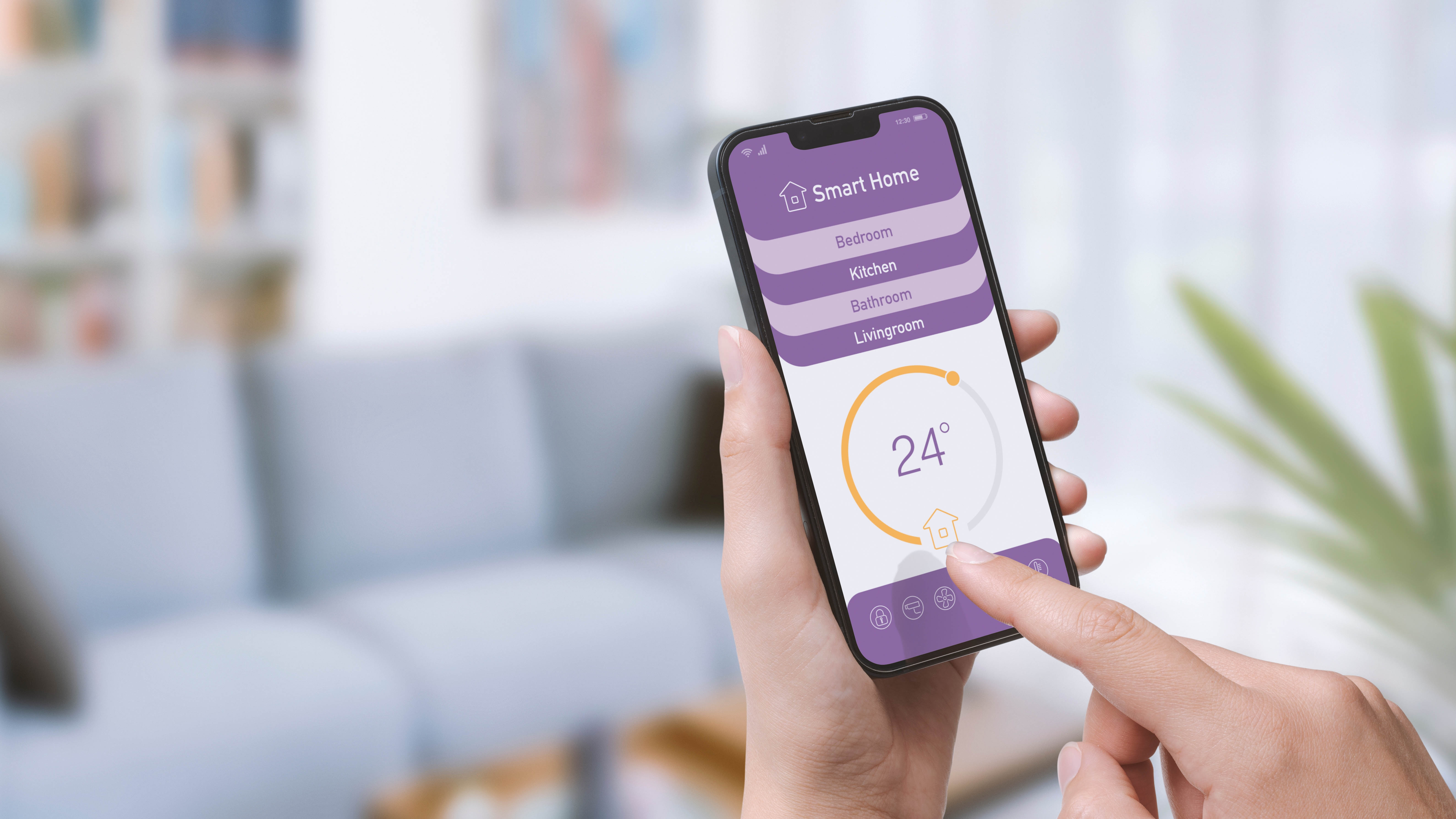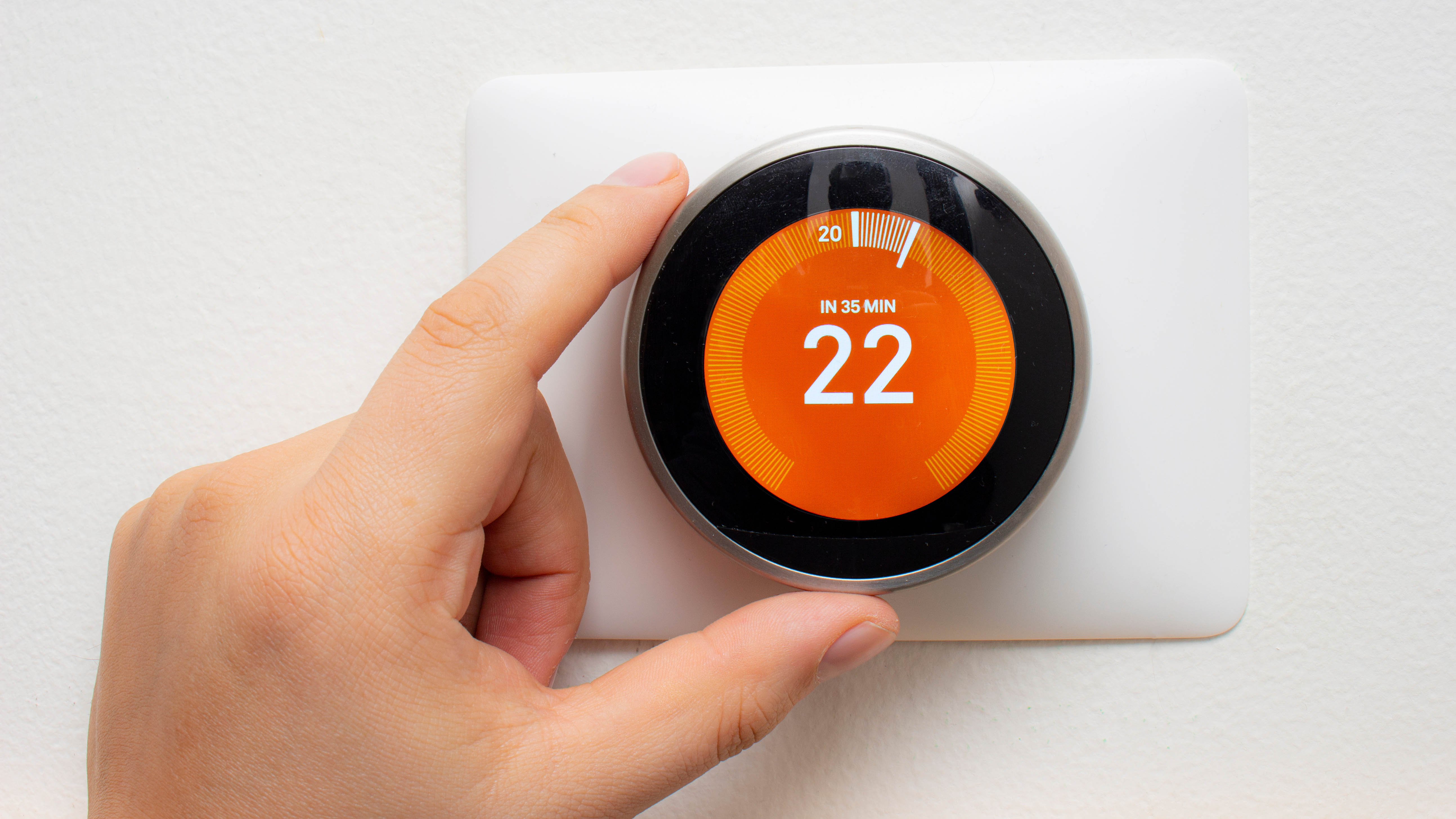4 ways a smart thermostat can lower your energy bill
Here’s how a smart thermostat can help you save money

As we enter the colder months, many of us are dreading having to heat our homes — or rather, dreading the cost of doing so. In fact, with energy prices on the rise, more of us are considering the benefits of installing one of the best smart thermostats.
To illustrate this, AO.com , a major appliance retailer, found that searches for smart thermostats rose by 140% month-over-month in the UK. But, if you’re new to this tech, it can be quite confusing to understand the difference a smart thermostat will make and the benefits it will provide.
That’s why we’ve pulled together this feature to explain exactly how a smart thermostat works and how it can save you money on your energy bills. With one of these, you can still warm your home and not have to worry about receiving an exorbitant bill down the line. Here are 4 ways a smart thermostat can save you money on your bills.
1. Scheduling

With a smart thermostat, you can schedule exactly what temperature you want and when, so you don’t have to manually adjust the dial every time you want a change. By doing this, you won’t accidentally leave the temperature on high and waste money while you're out of the house. It comes in use for warming the house automatically as well, such as first thing in the morning. If you’re unsure what temperature would be best to use, some smart thermostats can even suggest and set the optimum temperature automatically, giving you the best chance of saving on energy.
Smart thermostats are more clever than that though. Some will actually learn from your habits and behaviors via sensors. The Nest Learning Thermostat for instance, will "learn" when you're home and when you're not, and automatically adjust the temperature. This not only saves you the effort of making these adjustments yourself, it keeps your heating use in check, making sure it is only switched on while you’re at home.
Speaking of which, if you ever forget to switch off your heating when taking a vacation, there’s no need to worry with a smart thermostat. Thanks to the app connectivity, you can remotely adjust the settings, and save energy.
2. Room specific control

If you find yourself only sticking to one or two rooms in the house, why are you heating the whole property? Some smart thermostats come with sensors which enable you to control exactly what temperature you want in a particular room. That way, you can set some rooms hotter or cooler than others.
Sign up to get the BEST of Tom's Guide direct to your inbox.
Get instant access to breaking news, the hottest reviews, great deals and helpful tips.
Our favorite smart thermostat, the Ecobee SmartThermostat Premium, even comes with sensors that have motion detection, so the heating will only commence when people enter the room — and will stop heating a room once you leave. Ecobee’s Smart Sensors offer this technology, but bear in mind it won’t be cheap if you’re dealing with multiple rooms. Each two pack of Ecobee sensors costs $79 from Amazon for instance, and you need one for every room you want to monitor.
3. Keeping an eye on costs

One of the best things about smart thermostats is the information and feedback it provides. By accessing the app, you can see exactly how much energy you’re using and the difference the smart thermostat is making, giving you better control and understanding of your consumption.
This can help you find ways to cut back — for instance, you can see how much energy can be saved with slight adjustments to the thermostat. In experimenting with this, you can find the optimum temperature for the best energy saving. Most smart thermostats, such as the Ecobee 3 Lite, will even recommend changes to help save money.
4. Clarity and convenience

With smart thermostats, adjusting the temperature of your home couldn’t be easier. You can make changes directly with a few taps on your phone, or even by voice control via Alexa, Google Assistant, or Siri if the system is compatible. Because of this convenience, we have a better opportunity to take an interest and make the necessary changes to save on our bills.
Even if you do somehow forget to monitor your heating system every now and then, your model should be able to automatically adjust the settings based on your habits. Essentially, smart thermostats offer clarity and convenience when it comes to heating our homes, and help us take control of our energy use.
What is a smart thermostat?
Like a traditional thermostat, a smart thermostat connects directly to your HVAC system to control the temperature. However, a smart thermostat will have additional capabilities: You'll be able to control it remotely using your smartphone and connect it to other smart home devices. In addition, smart thermostats typically have more advanced scheduling features than dumb thermostats, with some even able to adjust the temperature automatically based on whether it senses you're home or away.
Because a smart thermostat is connected to an app, you’ve got access to a lot more information than you would have had otherwise. You can see your energy consumption, set schedules and even find advice for reducing your usage. Some smart thermostats also come with sensors which can be placed in different rooms to set independent temperatures. Premium sensors can feature motion detection as well as air quality monitoring.
Ultimately smart thermostats are designed to give you improved insight and control over your HVAC system. You can conveniently control your heating to a precise degree, and the smart thermostat can even learn from your routine to make suggestions.
How much can you save with a smart thermostat?

Your energy savings will vary depending on your utility provider and the rate you're being charged for electric or gas. However, if you opt to use an Energy Star Certified model, this should save a minimum of 8% on your heating and cooling bills per annum, which equates to roughly $50.
Ecobee, on the other hand, reported much higher savings of up to 26% on both heating and cooling bills for customers in North America.
Whereas Nest claims, ‘US customers [saved] about 10-12% on their heating bills and about 15% on their cooling bills. We've estimated average savings of $131 to $145 a year, which means the Nest thermostat can pay for itself in under two years.’
In any case, there are savings to be had so one of these devices is well worth the investment.
How much does a smart thermostat cost?
The highest-end smart thermostats, such as the Nest Learning Thermostat and the Ecobee SmartThermostat Premium — which both look the best and have the most features — command the highest price, around $200 to $250.
However, you can find other models, such as the Ecobee 3 Lite and the Google Nest Thermostat for around $150; other models, such as the Amazon Smart Thermostat, are as cheap as $60, but don't have the capabilities of higher-priced models.
If you're turned off by the higher price of a smart thermostat, it's important to know that many utility companies offer rebates and incentives for purchasing a smart thermostat — in some circumstances you can even get one for free.
Be sure to check out the Ecobee rebate finder and Nest rebate finder to look for deals in your area, and also check with your local utility.
For more tips, tricks and how tos, check out 12 essential tips for saving on your energy bill and 15 water saving tips to lower your bill.

Katie Mortram used to be a Homes Editor for Tom's Guide, where she oversaw everything from kitchen appliances to gardening tools, as well as smart home tech. Specializing in providing expert advice for cleaning and home manintenance, she now works as Household Advice Editor for Good Housekeeping.
